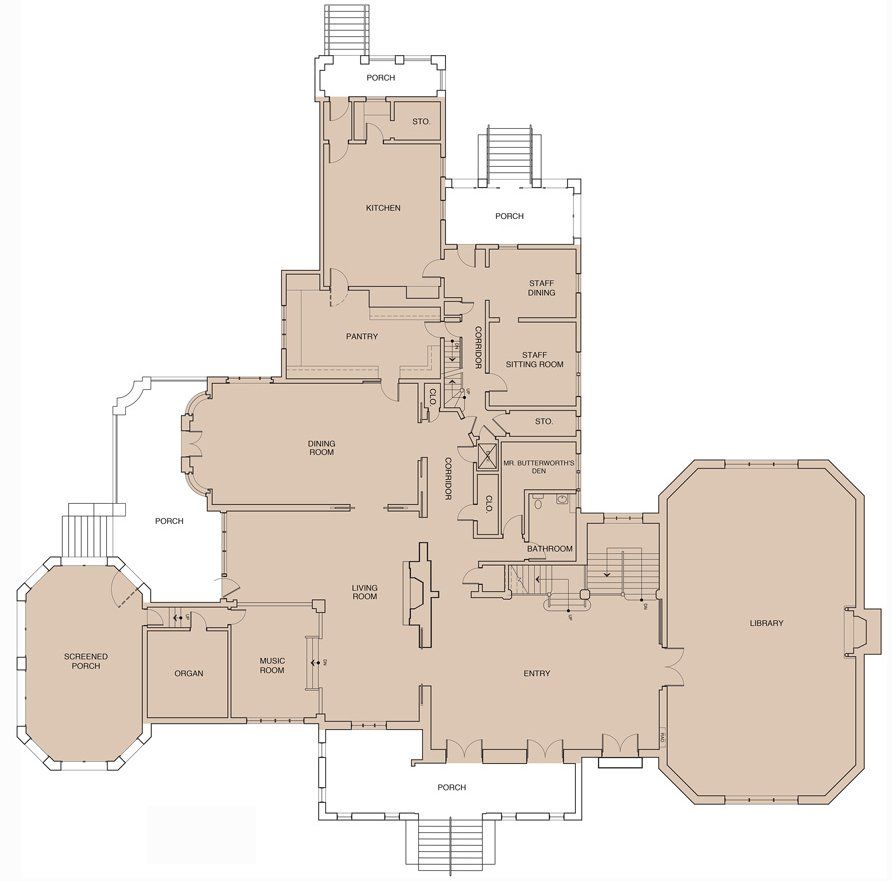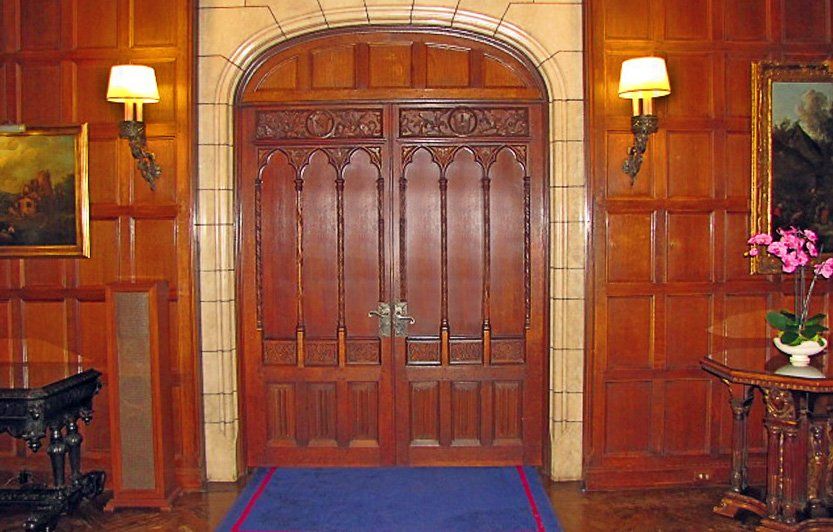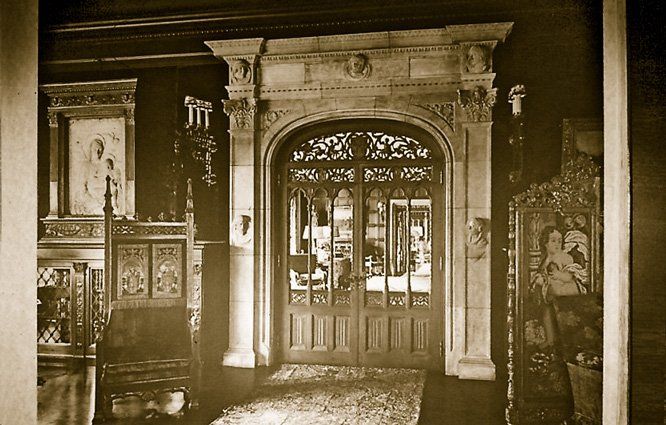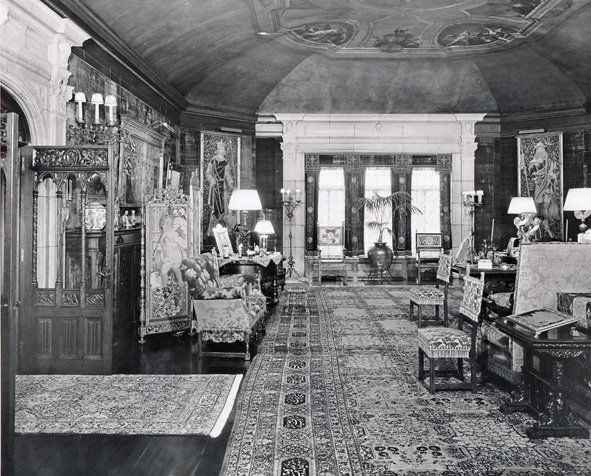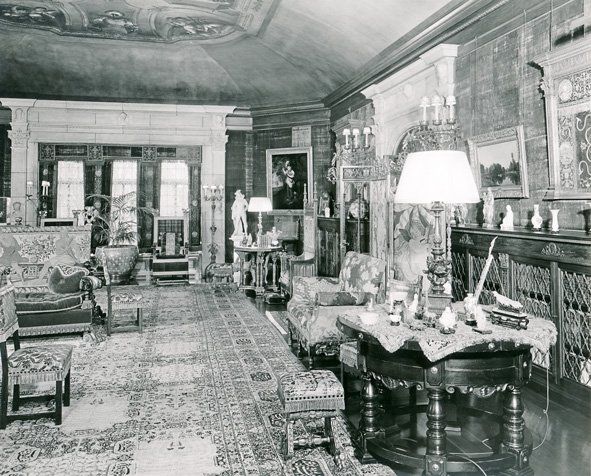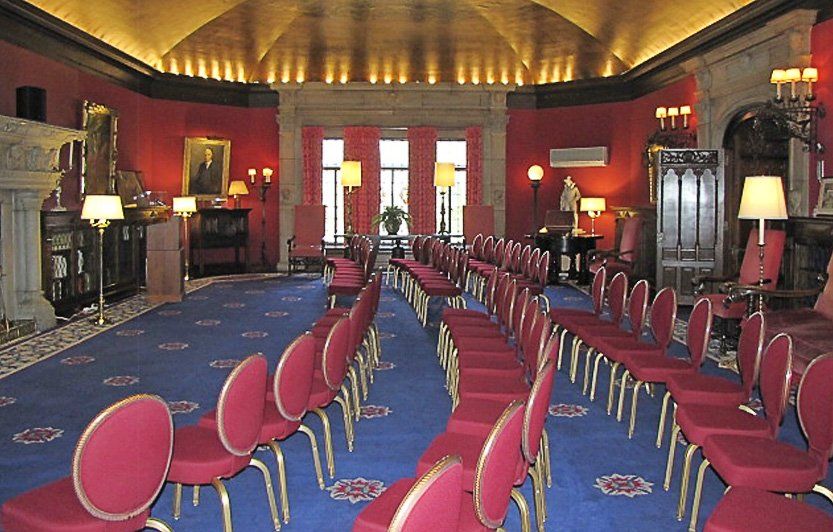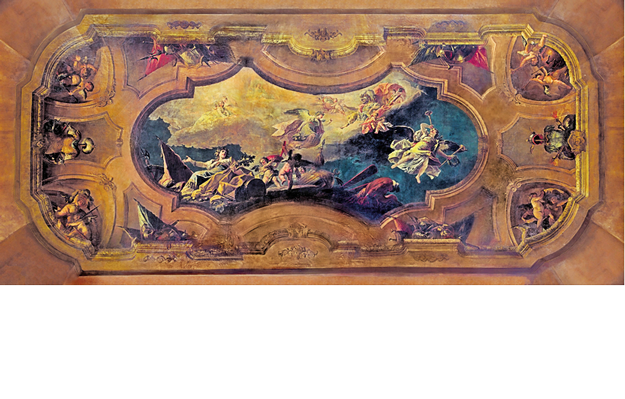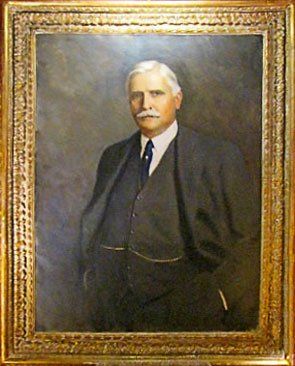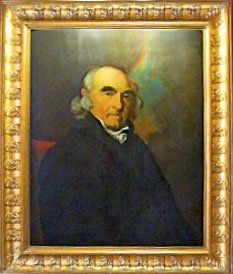lace-making dates to 16th century England.
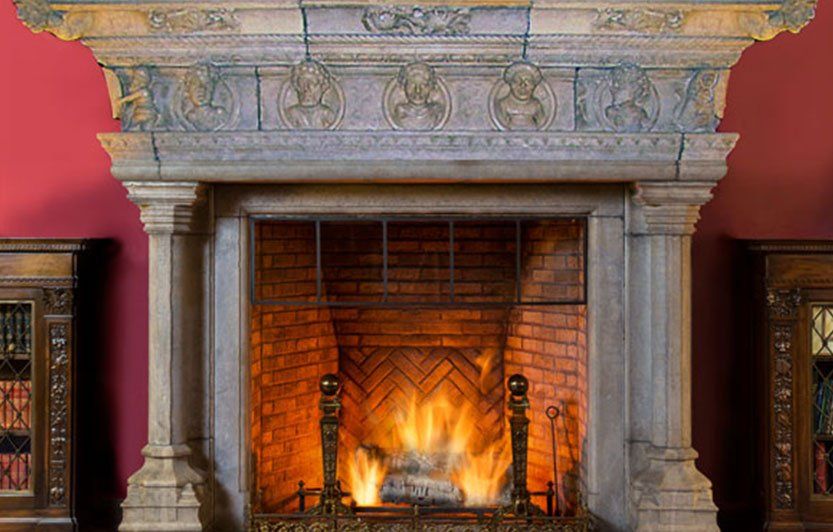
The mantel, door, and window stonework reflect the Italian Renaissance. The mantel is an exact copy from a French chateau mantel, now located at Leeds Castle in Kent, England. The stone is believed to be Rouen stone, the same material used in the Leeds Castle mantel. The carvings of heads reflect learned men such as astronomers, philosophers, and mathematicians from the 15th and 16th centuries. All the stonework was completed by New York stone carvers under the direction of P.W. French & Company, designers of the Library’s interior.
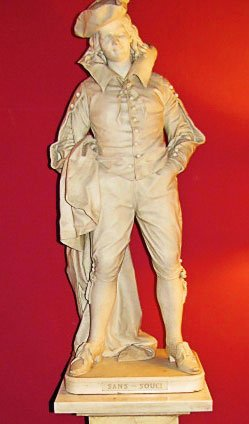
Mr. Butterworth bought the Sans Souci statue while on a trip to Germany. The story goes that while in an antique shop, he was told that the statue’s name means “without a care.” He replied, “That’s me, without a care,” and bought it.
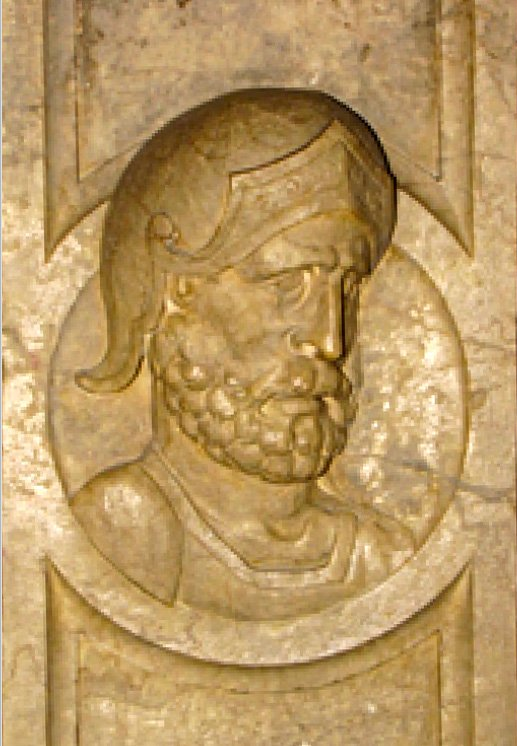
The mantel, door, and window stonework reflect the Italian Renaissance. The mantel is an exact copy from a French chateau mantel, now located at Leeds Castle in Kent, England. The stone is believed to be Rouen stone, the same material used in the Leeds Castle mantel. The carvings of heads reflect learned men such as astronomers, philosophers, and mathematicians from the 15th and 16th centuries. All the stonework was completed by New York stone carvers under the direction of P.W. French & Company, designers of the Library’s interior.
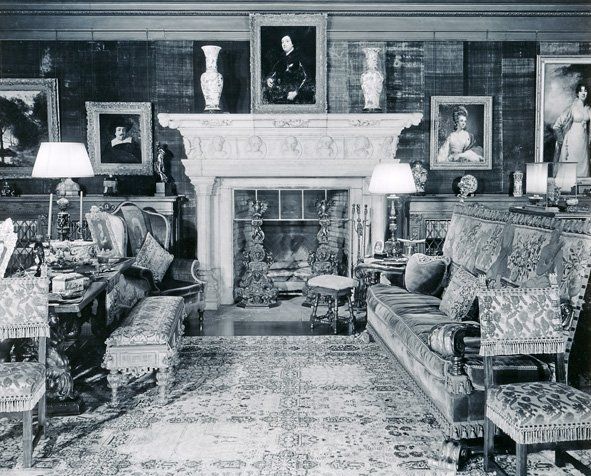
Photos from the 1950s show that the antique sofa, provided by P. W. French & Company, is original to the Library and once displayed a tapestry on its seat back. At some point, the tapestry back was removed and converted into a wall hanging. Today the tapestry hangs above the original sofa in the Library.
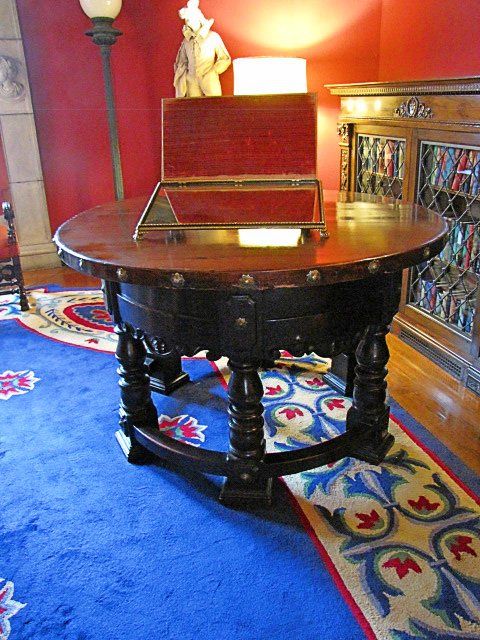
The massive round table appears in the 1950 photograph of the Butterworths’ Library
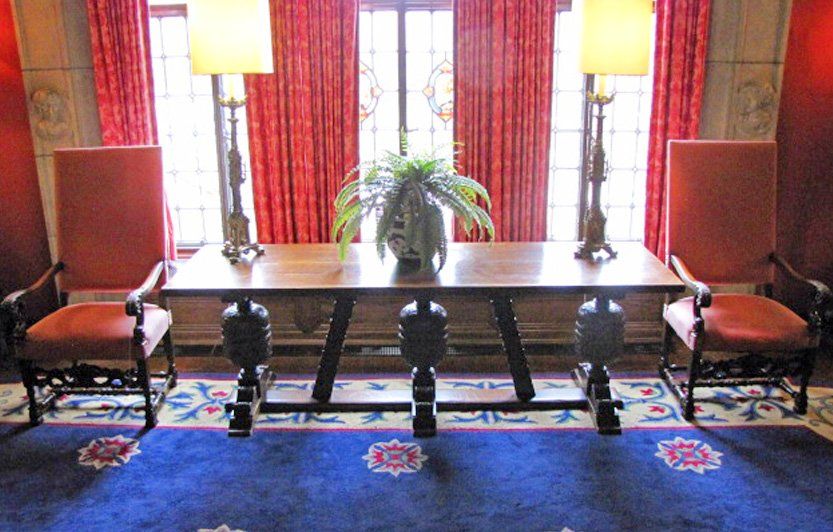
The long trestle table was used by the Butterworths in the Entry Way.

The Library still uses many of the graceful lamps from the Butterworths’ time in the home.

The President’s Bowl once resided in the Butterworths’ Washington, D.C. apartment. Mr. Butterworth received the bowl for his service as President of the United States Chamber of Commerce (1928 – 1931).
All Rights Reserved | William Butterworth Foundation
